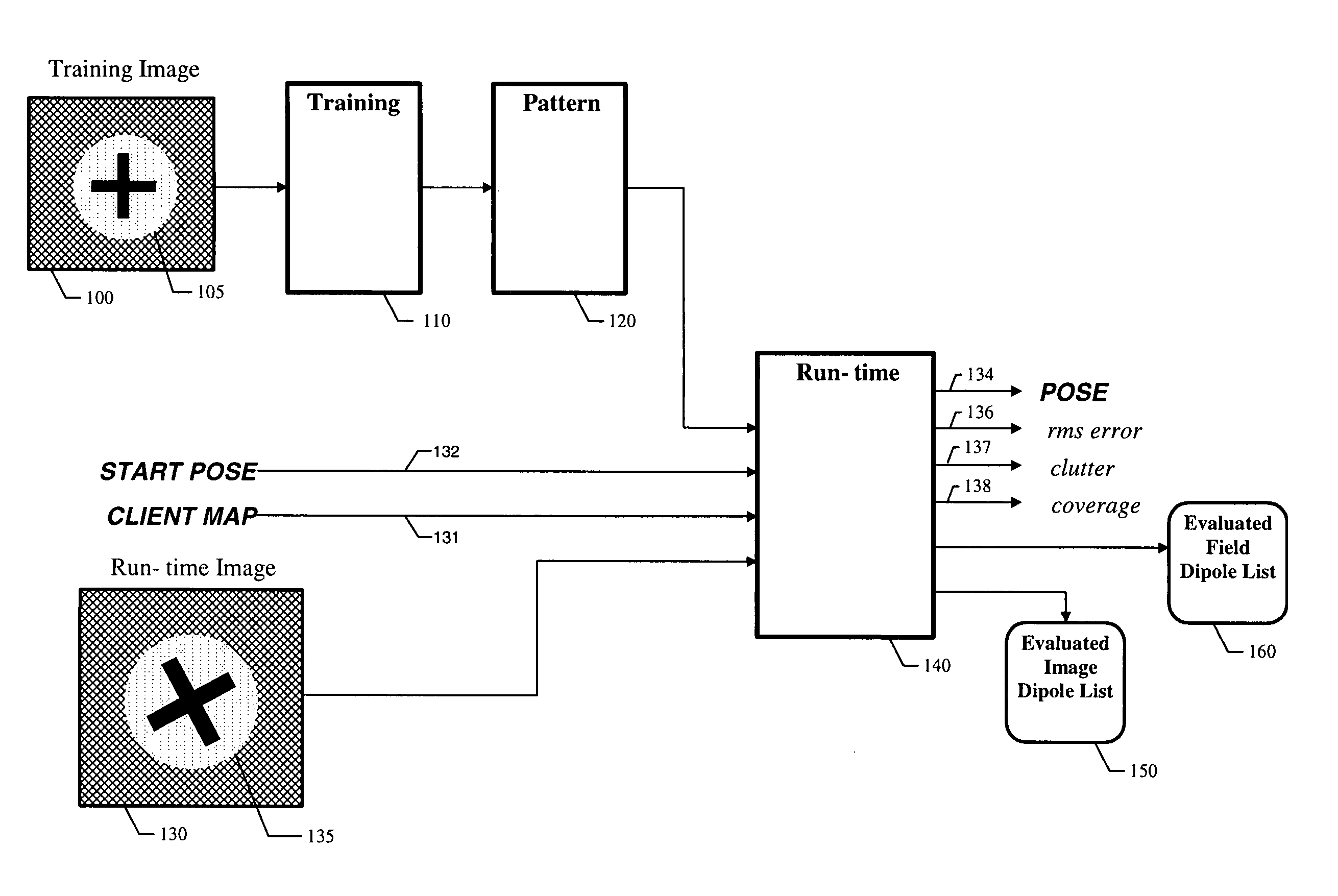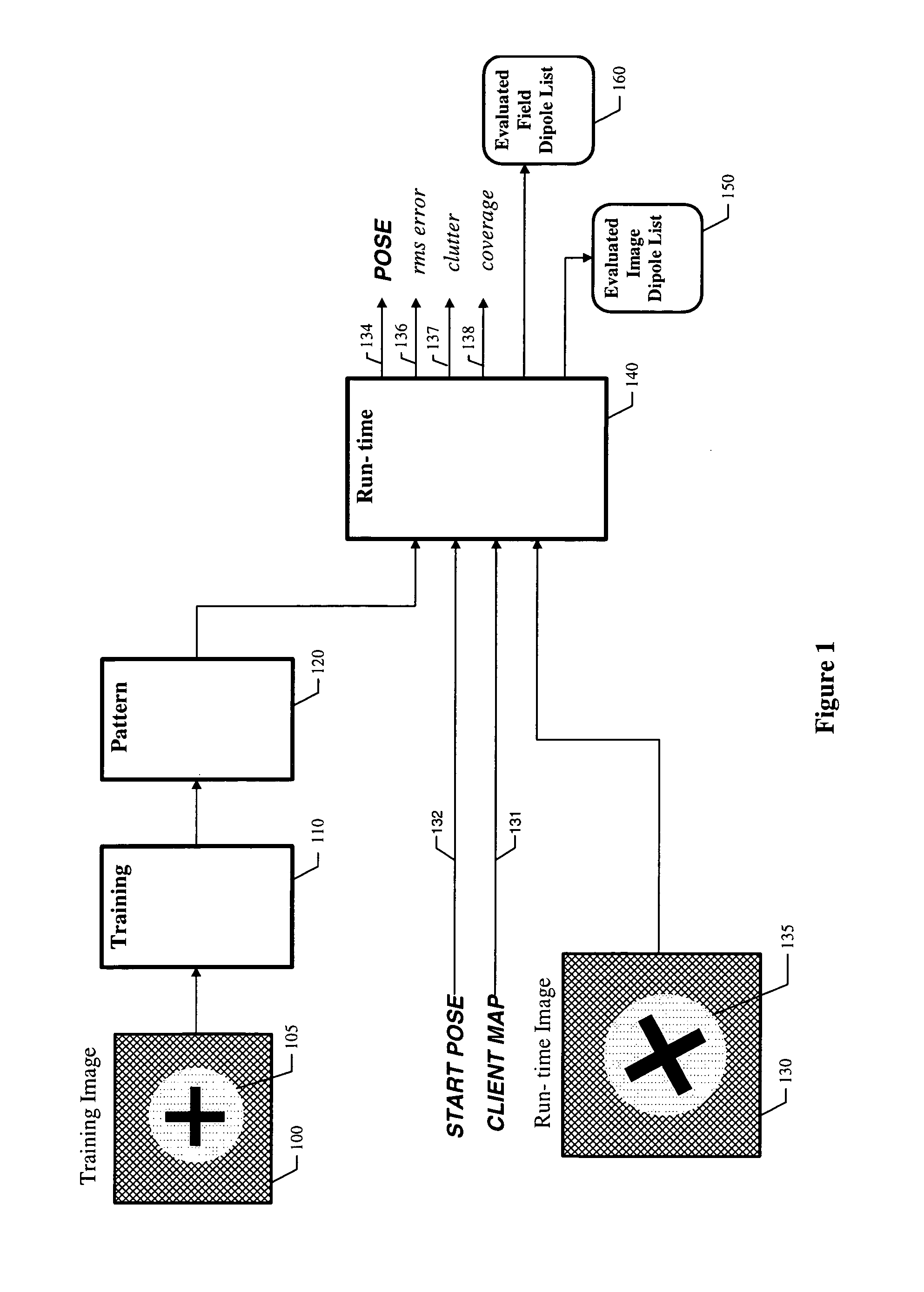Fast high-accuracy multi-dimensional pattern inspection
a multi-dimensional, fast technology, applied in the field of machine vision, can solve the problems of inability to detect fine variations, inability to reliably classify pixels as objects or backgrounds, and severe degradation of accuracy, so as to achieve better matching, limit inspection performance, and arbitrary precision
- Summary
- Abstract
- Description
- Claims
- Application Information
AI Technical Summary
Benefits of technology
Problems solved by technology
Method used
Image
Examples
Embodiment Construction
[0085]In the following figures, “modules” can be implemented as software, firmware, or hardware. Moreover, each module may include sub-modules, or “steps”, each of which can be implemented as either hardware, software, or some combination thereof. FIG. 1 is a high-level block diagram of one embodiment of the invention. A training (model) image 100 containing an example of a pattern 105 to be used for localization and / or inspection is presented. A training module 110 analyzes the training image and produces a stored model pattern 120 for subsequent use. At least one run-time image 130 is presented, each such image containing zero or more instances of patterns 135 similar in shape, but possibly different in size and orientation, to the training (model) pattern 105.
[0086]Each run-time image 130 has an associated client map 131, chosen by a user for a particular application. A client map is a coordinate transformation that maps, i.e., associates points in an orthonormal but otherwise ar...
PUM
 Login to View More
Login to View More Abstract
Description
Claims
Application Information
 Login to View More
Login to View More - R&D
- Intellectual Property
- Life Sciences
- Materials
- Tech Scout
- Unparalleled Data Quality
- Higher Quality Content
- 60% Fewer Hallucinations
Browse by: Latest US Patents, China's latest patents, Technical Efficacy Thesaurus, Application Domain, Technology Topic, Popular Technical Reports.
© 2025 PatSnap. All rights reserved.Legal|Privacy policy|Modern Slavery Act Transparency Statement|Sitemap|About US| Contact US: help@patsnap.com



